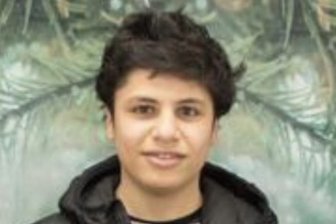CAPE RACE, N.L. – In a remote Marconi wireless station on the southeast tip of Newfoundland, the bland stream of “Wish you were here” messages from passengers aboard RMS Titanic ended with the inconceivable.

“My God, Mr. Gray, the Titanic has struck an iceberg and is calling CQD,” head operator Walter Gray would later recall being told by his subordinate, J.C.R. Godwin, at 10:25 p.m. EST on April 14, 1912.
It was just before midnight, ship’s time, and the luxury liner would be under water in less than three hours.
CQD was the early Morse code distress call used by Marconi installations. Titanic’s head operator Jack Phillips, a good friend of Gray’s from Marconi training, also sent out the more novel SOS.
Cape Race was the closest land base to the stricken ship, which met its fate about 600 kilometres southeast in the North Atlantic’s freezing Iceberg Alley.
For the first hour or so after that first distress call, “there was no thought of the ship sinking,” Gray wrote in his memoir “The Life Story of an Old Shetlander.”
After all, the jewel of the White Star Line had been glorified as unsinkable.
“It was only when Phillips announced …’We are now sinking slowly by the head. Putting women and children off in boats. Weather remains clear and calm,’ that the horror gripped,” Gray wrote.
Gray and his three-man crew continued to relay fading signals from Phillips in a desperate effort to get help from nearby vessels.
The actual Marconi logs at Cape Race were lost to fire or were accidentally thrown out, according to differing historical accounts.
But a log later replicated from those notes by one of Gray’s assistants, Robert Hunston, documents in eastern standard time the last messages between Titanic and other ships.
“11:00 p.m. Titanic continues calling for assistance and giving position.”
“11:36 p.m. Olympic asks Titanic which way latter steering. Titanic replies: ‘We are putting women off in boats.’ “
“12:50 a.m. Virginian says last he heard of Titanic was at 12:27 a.m. when latter’s signals were blurred and ended abruptly. From now on boats working amongst themselves relative to Titanic disaster. Nothing more heard from Titanic.”
About two hours and 40 minutes after striking the iceberg, the fabled ship had filled with water and was speeding toward the ocean floor.
Just over 700 people would be rescued from lifeboats or makeshift rafts, including Titanic’s assistant wireless operator Harold Bride who survived on an overturned collapsible lifeboat. More than 1,500 people died.
It’s unclear why the closest ship, the Californian, did not respond from where it had stopped several kilometres away in an icefield. An inquiry after the disaster heard that the wireless operator had gone off shift and never heard the pleas for help, and that Titanic’s emergency rocket flares were either misinterpreted or downplayed.
There are also contradictory accounts about who first heard the Titanic distress call.
Dave Myrick’s family lived and worked for generations at Cape Race. His great uncle, Jimmy Myrick, was a 14-year-old wireless apprentice the night the Titanic sank. According to family lore, he told a relative decades later that he happened to be alone as the ship’s distress call came in while senior operators were briefly out of the wireless room.
“Young Jim heard the CQD, SOS from the Titanic,” Dave Myrick said in an interview at the Myrick Wireless Interpretation Centre at Cape Race.
“He rushed out looking for Mr. Godwin and found him subsequently coming back in.”
Godwin then found Gray, who had been checking the engines that powered the station.
“Mr. Gray took over the operation then and everything else that followed was sworn to secrecy. Young Jimmy was sworn to never tell that he was left alone for even a few minutes.”
Such details are fodder for debate. But there’s no doubt about the huge role that tiny Cape Race played as the disaster unfolded, said Lynn-Marie Richard, curatorial assistant at the Maritime Museum of the Atlantic in Halifax.
“They were first to receive the message,” among land-based wireless stations, she said.
“For Gray to be on the receiving end, knowing that this was his friend … it must have been a terrible, terrible feeling.”
And that was just the beginning of an onslaught over the next hours and days of frantic messages from relatives, politicians and newspaper editors all scrambling for details, she said.
“You can imagine this little station in Newfoundland, how busy they would have been, the calls they would have had, and the responsibility of trying to satisfy everybody.”
Telegraph messages were handled with strict confidentiality.
Gray would later write that his first reports on Titanic were shared only with “the ship’s owners in New York, Southampton and Liverpool; to a certain New York newspaper and to my company in Montreal, all of this being in accordance with standing orders.”
Larry Daley, president of Titanic Expeditions Inc. in St. John’s, is planning a re-enactment on the night of April 14-15, as a ship over the Titanic wreck site sends the exact same messages to a wireless operator at Cape Race.
“We can do this safely and through regulations because we’re not actually sending the distress signals over the airwaves,” he said in an interview.
Instead, it will be a closed-circuit re-enactment using satellite transmission that won’t go out to ships in the region, Daley explained.
“Cape Race was the 911 of the day,” he said of the lonesome seaside station that “played a pivotal part in the rescue and saving over 700 lives.”


Comments